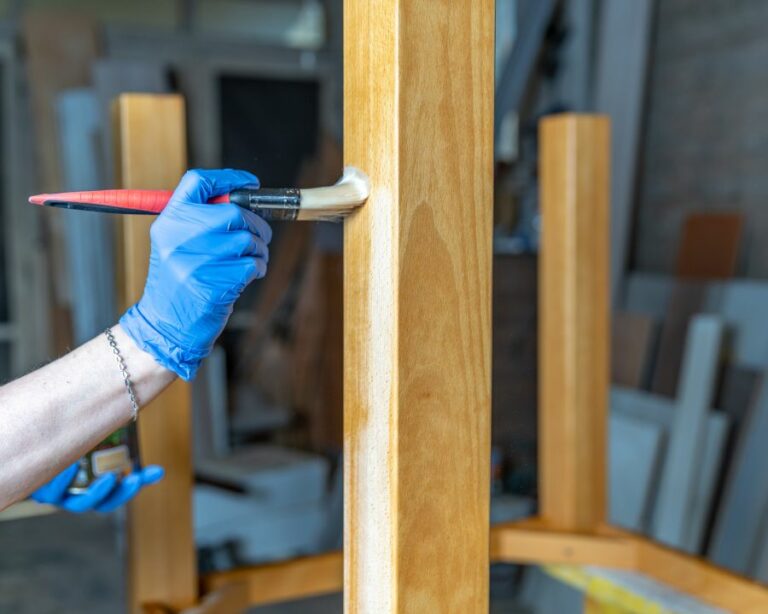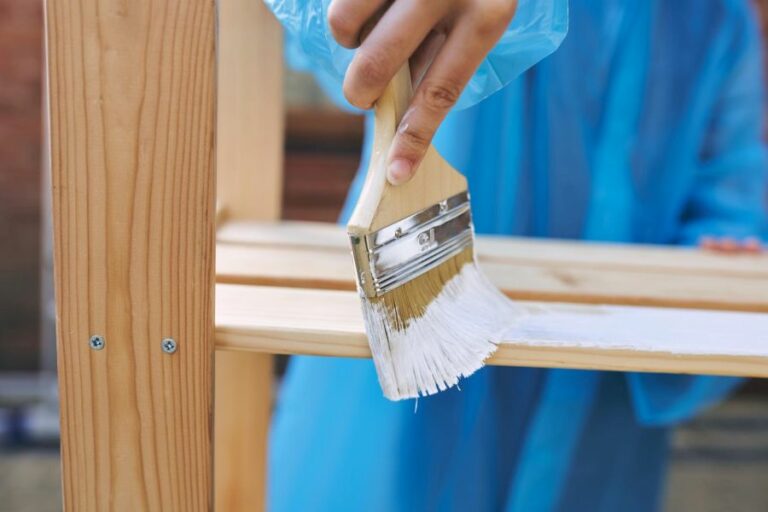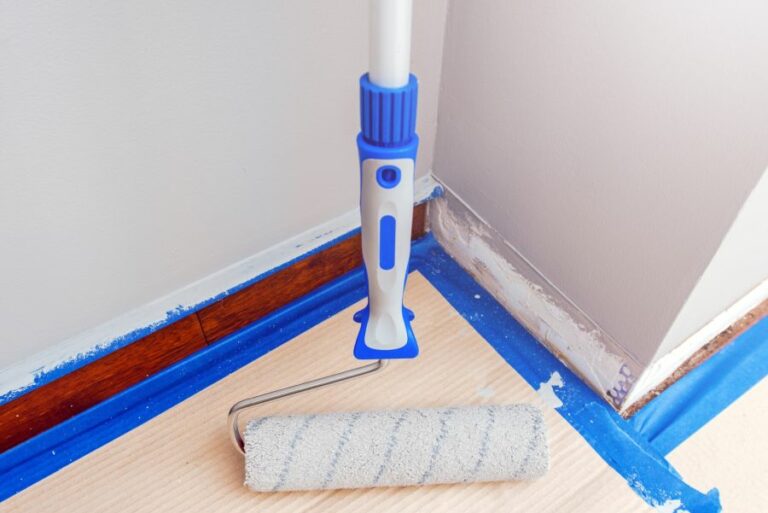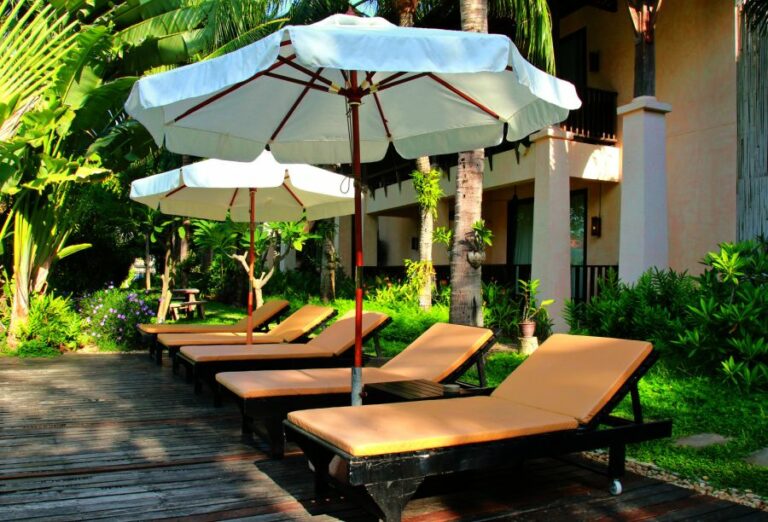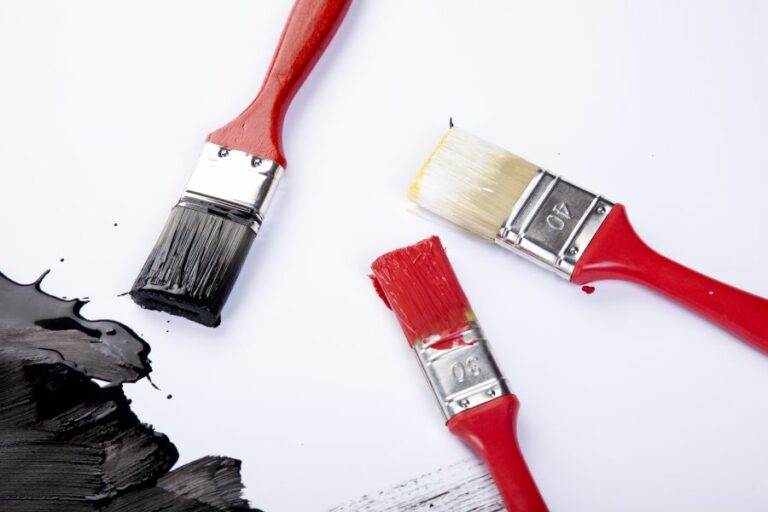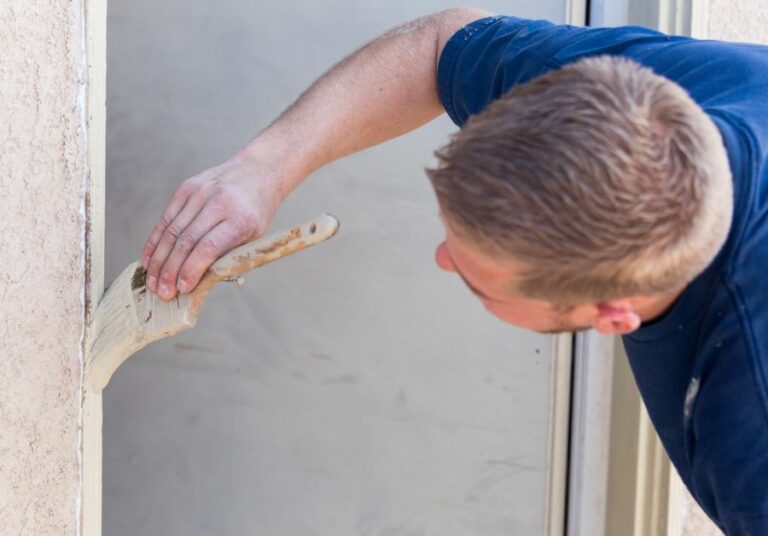Outdoor Milk Paint, 25 Things You Should Know
Are you looking to spruce up your outdoor furniture or add a splash of color to wooden garden decorations but unsure which type of paint will withstand the elements? Look no further; outdoor milk paint is your ultimate solution! As experts, we have all the information you need to confidently choose and apply this fantastic eco-friendly paint, giving your projects a durable and distinctive finish.
Outdoor milk paint:
Outdoor milk paint is a versatile and eco-friendly paint option made from natural ingredients like milk protein, limestone, clay, and pigments. It is non-toxic, biodegradable, and VOC-free, making it safe for the environment, pets, and humans. Ideal for exterior surfaces, milk paint provides a long-lasting, antique finish that is resistant to weather, water, and UV light.

Curious about outdoor milk paint? We have all the information you need to transform your exterior spaces with this eco-friendly, durable, and vibrant paint option! Read on to unleash your creativity and explore the versatile world of milk paint.
Contents
- 1 Exterior Milk-Based Paint
- 2 Is it Possible to Utilize Milk Paint for Outdoor Applications?
- 3 Is Real Milk Paint Resistant to Water?
- 4 What are the ideal applications for milk paint?
- 5 What is the Durability and Lifespan of Milk Paint?
Exterior Milk-Based Paint
Milk paint is a versatile and eco-friendly paint option that has been used for centuries. It has gained popularity in recent years for its natural ingredients, vibrant colors, and durability.
Outdoor milk paint is specially formulated for exterior surfaces and provides a unique, antique look while being resistant to weather, water, and UV light. This comprehensive guide will discuss the benefits, application, and maintenance of outdoor milk paint.
• What is Milk Paint?
Milk paint is made from simple, natural ingredients: milk protein (casein), limestone, clay, and pigments. It is a non-toxic, biodegradable, and VOC-free paint option that is safe for the environment, pets, and people.
Its unique properties make it an excellent choice for outdoor applications, as it penetrates wood fibers, providing a long-lasting finish that resists chipping and fading over time.
• Benefits of Outdoor Milk Paint
– Environmentally Friendly
As mentioned earlier, milk paint is made from all-natural ingredients and is free of harmful chemicals, making it an eco-friendly choice.
The Environmental Protection Agency (EPA) has identified indoor air quality as an important environmental issue, and using non-toxic paint is one way to promote a healthier indoor environment.
– Durability
Milk paint is known for its durability, especially when applied to outdoor surfaces. It penetrates and bonds well with wood fibers, resulting in a long-lasting finish that does not easily peel or chip.
– Unique Antique Finish
One of the main reasons people choose milk paint for outdoor projects is its unique aesthetic. When properly applied, milk paint produces a beautiful, vintage finish that is different from synthetic paints. Its natural ingredients allow it to develop a rich patina over time, adding character to the project.
– UV and Water Resistance
Outdoor milk paint is formulated with additional UV and water resistance properties, ensuring that the finish will not fade or deteriorate due to exposure to sunlight, rain, or humidity.
• Choosing and Mixing Outdoor Milk Paint
– Selecting the Right Color
Outdoor milk paint comes in a wide range of colors. When choosing a color, consider the desired effect and the surroundings. Remember that the natural finish of milk paint will change subtly over time, so pick a color that will age gracefully with your outdoor space.
– Mixing the Paint
Milk paint is often sold in powder form, requiring you to mix the paint with water before application. Follow the manufacturer’s instructions to achieve the proper consistency, as this will significantly impact the final look and durability of the paint.
I recommend mixing small batches of paint as needed, as milk paint has a short shelf life once mixed. Using a blender or electric mixer can help ensure a smooth, uniform paint consistency.
• Applying Outdoor Milk Paint
– Preparing the Surface
Proper surface preparation is crucial when applying outdoor milk paint. Begin by removing any dirt, grease, or old paint from the surface. This can be done with a scraper, followed by sanding and cleaning the surface with a damp cloth.
If working with raw wood, ensure that the surface is smooth and free of any potential barriers, such as wax or oil. These can prevent the paint from bonding properly with the wood fibers.
– Applying the Paint
Once the surface is prepared, apply milk paint using a brush or roller. Work in sections, applying thin, even layers of paint. The first layer may appear translucent and uneven, but this is normal. Subsequent layers will build up opacity and create a smooth finish.
I recommend applying at least two or three coats of outdoor milk paint, allowing each layer to dry thoroughly before applying the next. The paint will dry quickly, usually within one to two hours. However, the drying time may be longer in humid conditions.
– Sealing the Paint
To ensure the longevity and durability of the paint, it is essential to seal the finished project with a protective topcoat. Choose a sealer compatible with the milk paint, such as a water-based, exterior-grade sealer.
Applying multiple thin layers of the sealer with a brush or roller will create a durable finish that protects the paint from the elements and enhances its appearance.
• Maintaining Your Outdoor Milk Paint Project
The natural finish of milk paint will change over time, adding character to your project. There is no need to seal it again, but occasionally cleaning it with mild soap and water will help preserve the finish.
When necessary, milk paint can be easily touched up or repainted. The original painted surface should first be cleaned and lightly sanded to ensure proper adhesion of the new paint.
• Conclusion
With its eco-friendly properties, beautiful antique finish, and durability, outdoor milk paint is an excellent choice for outdoor projects. By following the guidelines provided in this ultimate guide, you can confidently select, mix, apply, and maintain outdoor milk paint for a stunning and long-lasting result.
Is it Possible to Utilize Milk Paint for Outdoor Applications?
Milk paint is an environmentally friendly, versatile, and vintage-looking paint option that has been utilized for centuries. As this paint type continues gaining popularity in today’s interior design and furniture restoration world, many wonder if milk paint can also be used for exterior projects.
• The Origin of Milk Paint
Milk paint is a traditional paint that has been used for centuries, dating as far back as the Egyptian times. It is made from a mixture of milk protein (casein), lime, and natural pigments, giving it a unique look and texture. This paint is known for being eco-friendly, durable, and breathable.
Although it has been predominantly used for interior applications over the years, it is essential to understand its adaptability for exterior projects.
• Milk Paint’s Outdoor Performance
Milk paint can be used outdoors, but there are specific factors to consider before spending your time and resources applying it to an exterior project.
The performance of milk paint may change when exposed to various environmental conditions, such as ultraviolet (UV) rays, high humidity, and temperature fluctuations.
– UV Resistance
Milk paint has minimal UV resistance, meaning it may be prone to fading and discoloration when exposed to direct sunlight for extended periods. To increase the UV resistance, you can apply a UV-resistant topcoat or consider other natural pigment options that are less likely to fade.
Additionally, selecting a shaded area for your outdoor project can help reduce the impact of UV rays on the paint.
– Moisture Resistance
Milk paint is porous and breathable, allowing moisture to be absorbed and released. This attribute makes it less likely to crack, peel, or blister due to changes in humidity.
While this can be advantageous in some outdoor situations, it might not be the best choice for surfaces that are continuously exposed to high levels of moisture, such as decks and outdoor furniture.
– Temperature Fluctuations
Milk paint can withstand temperature fluctuations relatively well. However, excessively high or low temperatures may still cause the paint to crack or peel, particularly if the surface is not adequately prepared before application.
Utilizing a primer or sealant can aid in increasing the paint’s overall durability in extreme temperatures.
• Preparing Outdoor Surfaces for Milk Paint
Proper surface preparation is crucial for achieving optimal results when using milk paint outdoors. Here are the essential steps to ensure a successful application:
- Selecting the Right Surface: Choose a surface that is not exposed to extreme weather conditions and is not continuously damp or wet. Examples include fences, window shutters, or garden ornaments.
- Cleaning the Surface: Dirt, debris, and any loose paint must be removed from the surface thoroughly with a brush or mild detergent solution. Rinse the surface fully and allow it to dry completely.
- Priming the Surface: Applying a primer or sealant can be beneficial in improving the adhesion of milk paint to the surface and enhancing its durability. A high-quality primer compatible with milk paint that caters to the specific exterior material (wood, metal, etc.) is recommended.
• Protecting Milk Paint on Exterior Surfaces
After applying milk paint to an outdoor surface, you may want to consider adding a protective topcoat for added durability and longevity. This can help preserve the paint from fading, water damage, and wear and tear.
There are several types of topcoats available that are suitable for use with milk paint, such as polyurethane, tung oil, and sealants specifically made for outdoor use. It is essential to follow the topcoat manufacturer’s guidelines for application and drying times.
• Conclusion
While milk paint might not be the first choice of paint for all exterior projects due to its susceptibility to UV rays and moisture, it remains a viable option for certain outdoor surfaces with proper preparation and protection.
Considering the paint’s unique texture, color vibrancy, and eco-friendly nature, milk paint offers a distinctive aesthetic that can enhance the beauty of any outdoor space.
Those interested in outdoor milk paint use may refer to the United States Environmental Protection Agency’s guidelines on eco-friendly paint options for additional guidance and recommendations.
With this comprehensive guide on using milk paint outdoors, you can confidently select the right project for milk paint application, properly prepare the surface, and protect the paint for lasting results.
Is Real Milk Paint Resistant to Water?
As a person with hands-on experience in painting various surfaces and a keen interest in using eco-friendly options, I was naturally drawn towards milk paint as a potential alternative to the common, more toxic paints available in the market.
One of the many questions that come up often from those new to working with milk paint, and one I have pondered on myself, is whether real milk paint is waterproof or not.
In this article, I will share my knowledge and experience with regard to the water-resistant properties of milk paint and provide my recommendations for using it effectively in different scenarios.
• What is Real Milk Paint?
Before diving into its waterproof capabilities, let’s briefly understand what makes milk paint different from other types of paints. Real milk paint is an ancient, eco-friendly option that has been used for centuries.
It is made from natural ingredients like milk protein (casein), lime, and pigments derived from minerals or plant sources. This makes milk paint a completely biodegradable, non-toxic, and environmentally safe option for those looking to reduce their carbon footprint.
• Water Resistance of Real Milk Paint
To put it simply, real milk paint, once dry, is water-resistant but not completely waterproof. The term “water-resistant” implies that milk paint can resist the penetration of water to some extent, but not entirely.
Milk paint, when applied correctly and allowed to cure, will create a durable and protective finish on the painted surface, resisting moisture and water.
However, if exposed to a prolonged or continuous source of water or moisture, milk paint may eventually soften, lose adhesion or even dissolve. This is mainly due to the inherent nature of its key ingredient, casein, which is soluble in water.
• Tips for Enhancing Milk Paint’s Water Resistance
While milk paint may not be inherently waterproof, there are certain steps you can take to improve its water resistance and make it more suitable for a variety of applications that may involve water exposure. Here are my recommendations:
1. Use Outdoor Additive
These additives are typically mildew-resistant and protect the milk paint from ultraviolet rays, prolonging its life and thereby making it more resistant to the elements, including water.
2. Apply Multiple Coats
Applying multiple coats of milk paint will act as a barrier to water penetration. The more layers of paint you apply, the more resistant your painted surface will be to water.
It is important to allow each coat to dry completely before applying the next one to ensure a proper bond and curing process.
3. Opt for a High-Quality Sealer
Applying a high-quality sealer or topcoat over milk paint is crucial to enhancing its water-resistant properties. Sealers like tung oil, hemp oil, or other water-resistant, non-toxic sealers will not only protect the paint from moisture but also provide it with added strength and durability.
My personal recommendation is to use a penetrating oil sealer, as it absorbs into the milk paint and provides a more durable and long-lasting finish.
• When to Avoid Milk Paint
Milk paint is incredibly versatile and can be used on a wide range of surfaces. However, there are particular circumstances where it may not be the best choice given its water-resistant, but not waterproof, nature.
It is advisable to avoid using milk paint in areas that require absolute waterproofing or come in constant contact with water, such as the insides of sinks, bathtubs, or shower enclosures.
• Conclusion
In conclusion, real milk paint is a durable and water-resistant paint option but falls short of being completely waterproof.
However, with the right surface preparation, additives, and sealers, milk paint can be an excellent eco-friendly choice for a variety of applications, including those that might involve occasional moisture or water exposure.
My final recommendation would be to assess the specific requirements of your painting project and evaluate whether milk paint is the right choice considering its water-resistant properties and other factors.
What are the ideal applications for milk paint?
Milk paint, a centuries-old paint formula, has seen a resurgence in popularity due to its eco-friendly and non-toxic properties.
• Origins and Composition of Milk Paint
Milk paint dates back to ancient times and is made from all-natural ingredients such as milk protein (casein), lime, and pigment. This type of paint is free from volatile organic compounds (VOCs), which are often found in conventional paints and can contribute to poor indoor air quality.
Milk paint is available in both powdered and premixed forms, allowing users to customize the consistency and coverage based on their needs.
There are also various additives that can be incorporated, such as bonding agents, waxes, and oils, to optimize the performance and appearance of the final result.
• Furniture Restoration and Refinishing
One of the most popular uses for milk paint is in the restoration and refinishing of antique and vintage furniture. The water-based formula is perfect for refinishing projects, as it can be easily applied over existing finishes or bare wood.
The paint’s adherence and consistency can be customized depending on the desired outcome.
Milk paint is known for producing a beautiful, authentic, and vintage-like finish that is hard to achieve with other paints. The flexibility in mixing and adding additives means that it can be used on a variety of surfaces, making it possible to achieve both smooth and textured finishes.
Over time, milk paint can develop a natural patina that adds character and charm to furniture pieces.
As an experienced user, I recommend using a bonding agent when painting on smooth, non-porous surfaces, such as metal or laminate furniture. This will ensure proper adhesion and prevent the paint from chipping. To enhance the durability of the finish, consider using a topcoat like wax or oil.
This step will not only protect the surface but also give it a pleasing sheen.
• Wall Paint for a Healthier Home Environment
Milk paint’s eco-friendly properties make it an excellent choice for interior walls, especially in homes with people who have allergies or sensitivities to harsh painting chemicals. The absence of VOCs means that there is minimal off-gassing, resulting in better indoor air quality.
Additionally, milk paint is naturally resistant to mold and mildew, further contributing to a healthier living environment.
When using milk paint on walls, you may need to adjust the consistency of the paint mixture to achieve the desired coverage and level of opacity.
This requires some experimentation, but it is well worth the effort. Be prepared to apply multiple coats, as milk paint dries quickly, and thinner coats are recommended for even coverage.
• Art and Craft Projects
Milk paint’s rich and vibrant colors make it perfect for various creative projects, such as canvas painting, decorative items, and DIY home accessories. Its versatility allows for diverse techniques, from creating a distressed, chippy finish to achieving solid, bold colors.
Moreover, milk paint is safe to use for projects involving children, thanks to its non-toxic composition.
When working on smaller projects, milk paint can be easily mixed in smaller quantities, reducing waste. Remember to explore the options of additives available to tweak the paint’s properties and create unique finishes on your artwork.
• Final Thoughts and Recommendations
In conclusion, milk paint’s eco-friendly and non-toxic properties make it a versatile and viable option for various applications, from furniture restoration and wall painting to craft projects.
The paint’s natural ingredients contribute to a healthier home environment and provide a creative avenue for achieving unique finishes.
To learn more about milk paint, its history, and usage tips, consider visiting reputable websites, such as The Real Milk Paint Co., which offers additional information and resources to help you make the most out of your milk paint projects.
Use | Description |
|---|---|
Wood Furniture | Milk paint is great for giving wood furniture a distressed, antique look or creating a solid color finish. It bonds well with wood surfaces and can be easily sanded for a smooth finish. |
Walls | Milk paint can be used on interior or exterior walls, providing a porous and breathable finish that is environmentally friendly. It can also be applied on plaster, cement, and drywall surfaces. |
Cabinetry | For a rustic or antique look, milk paint can be used to refinish kitchen cabinets, bathroom vanities, or built-in cabinetry. It adheres well to wood and can be easily customized with various color options. |
Floors | Although not as durable as other floor paints, milk paint can be used on wood floors to create a unique, low-luster finish. It is best for low-traffic areas and may require additional sealant for protection and durability. |
Art Projects | Milk paint can be used for various art and craft projects, such as decorative signs, picture frames, or pottery. Its natural ingredients and lack of harsh chemicals make it a safe and eco-friendly option for artists. |
What is the Durability and Lifespan of Milk Paint?
Milk paint is an eco-friendly and versatile paint option known for its unique aesthetic appeal and durability. Its vintage appearance and ability to adhere to various surfaces make it perfect for restoring furniture, transforming home decor, or even painting walls.
For those considering utilizing milk paint for a project or simply curious about its longevity, continue reading to explore how long milk paint lasts in various contexts.
• Unmixed Milk Paint Powder: Shelf Life and Storage Tips
Made from natural ingredients like milk protein, lime, and pigments, milk paint comes in a powdered form that has to be mixed with water to create the desired consistency. Due to its composition, the shelf life of unmixed milk paint powder may vary depending on how it’s stored.
When the milk paint powder is stored in a dry, cool, and dark place away from exposure to moisture and sunlight, it can last indefinitely.
Using proper containers, such as air-tight plastic or glass jars, to keep the powder from absorbing humidity and placing it in a bunker, garage, or dry basement well away from dampness will maintain the powder’s suitability for future projects.
• Mixed Milk Paint: Making It Last
Once milk paint powder is mixed with water, its longevity will be significantly reduced. While the paint is fresh and the water has not evaporated, it could last anywhere from 2-7 days during moderate climate conditions.
However, it’s essential to be aware that the paint’s usability may change during fluctuations in temperature and humidity.
Ensure that the paint mixture is stored in an air-tight container, away from heat and sunlight, and stir it frequently. If an unpleasant odor emerges or mold begins to form, it’s time to discard the paint as it is not suitable for use.
In my experience, I recommend only mixing the amount of paint needed for a singular project to avoid waste and ensure the best results.
• Durability on Various Surfaces
Milk paint is known for its excellent adhesion properties, making it simple to apply to a wide range of surfaces, such as wood, metal, glass, and masonry. Its durability varies depending on the specific surface it’s applied to, and whether or not a protective topcoat is added.
– Wood
The distinctive look of milk paint on wood is what typically comes to mind when one thinks of this traditional paint type. When applied to wood, milk paint penetrates deep into the fibers, resulting in a strong bond that can last for years without peeling or chipping.
To further protect your wooden projects from wear and tear or exposure to moisture, add a wax, oil, or polyurethane topcoat. I recommend using a high-quality topcoat as it can significantly increase the lifespan of the paint, particularly for frequently-used furniture items.
– Metal
For metal surfaces, milk paint also adheres very well. However, its durability could vary. If applied correctly (e.g., with a proper primer) and sealed with the appropriate topcoat, milk paint on metal can last for several years.
As per my experience, using the right topcoat designed especially for metal will prevent rust and further extend the paint’s life.
– Glass, Ceramic, and Masonry
Milk paint’s adherence quality to non-porous surfaces like glass and ceramic can be enhanced by adding a bonding agent to help secure the paint. The same applies to masonry surfaces, such as brick and concrete.
However, paint applied to glass, ceramic, or masonry without a bonding agent can chip or peel more easily compared to wood and metal surfaces. By selecting an appropriate sealer, the durability and lifespan of your milk paint project can be extended significantly.
• Considering the Environment: Milk Paint vs. Traditional Paint
Milk paint’s natural and eco-friendly ingredients make it a perfect alternative for those concerned about the environmental impacts of traditional paint.
With an increasing focus on sustainability and a global shift towards environmentally-conscious choices, milk paint can be seen as a step towards reducing our ecological footprint. Moreover, its longevity, versatility, and unique appearance make milk paint an excellent option for various projects.
In conclusion, milk paint’s shelf life and durability depend on several factors, such as proper storage and application and choosing the right topcoats.
With the knowledge provided in this article and some careful attention, milk paint can last for many years as an effective, durable, and stunning design element for your projects.
Storage condition | Shelf life |
|---|---|
Powder form (unmixed) | Up to 1 year |
Mixed milk paint | 5-7 days (refrigerated) |
Applied milk paint | 10-15 years (interior); 5-10 years (exterior) |

